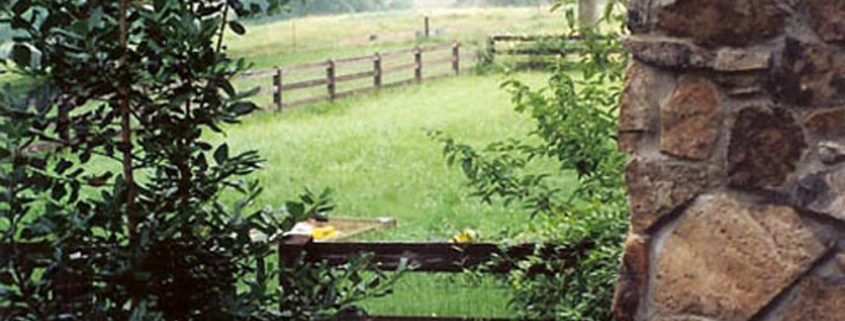Professional Services
We design places that range from small and intimate to large and far-flung. Our company is titled “environmental design” because we deal with whole environments – not just the superficial elements. With each project, we strive to respect the character of the ecosystems that make up the properties we design. An example of this is a horse farm we were site-planning in which we felt the need to preserve existing wetlands rather than turn them into additional pastureland. After explaining our position to the client, they agreed, and the resulting lands retained their natural beauty as well as fulfilled the client’s needs.
We respect the natural systems of the land and recommend sensitive preservation and enhancement of those systems. On horse farms, for example, terracing helps maintain the soil and prevent erosion. So, when we find land that has been graded down and the terraces removed, we restore them. This allows for proper drainage. Where practical, we propose numerous collection points for storm water rather than one large hole that spoils the visual character of the site.
These are examples of how we work. Our team works well in terms of varied disciplines because we listen to both clients and each other before deciding on a response. This allows us to give sufficient thought to the project before presenting our solutions, so that the purposes and needs of the project are met.
Analysis:
Environmental Analysis
Feasibility Studies
Wetlands Mitigation
Planning:
Master Planning
Site Planning and Low Impact Development Plans
Community and Neighborhood Planning
Campus Planning
Commercial and Institutional Design
Zoning and Rezoning Submittals
Urban and Rural Space Planning
Landscape Architecture:
Parks and Recreation
Streetscape Design
Tree Ordinance conformance Plans
Bio-retention for Stormwater
Plan Illustration
Garden Design
Horse Farm Planning
Pedestrian and Bicycle Path plans








